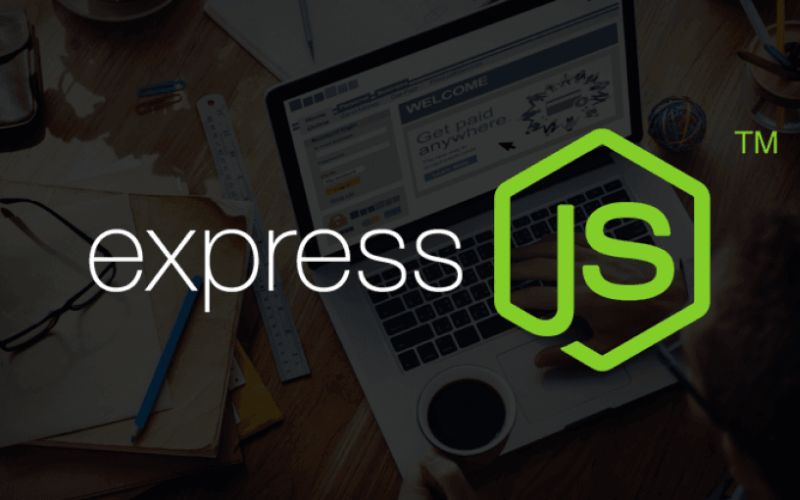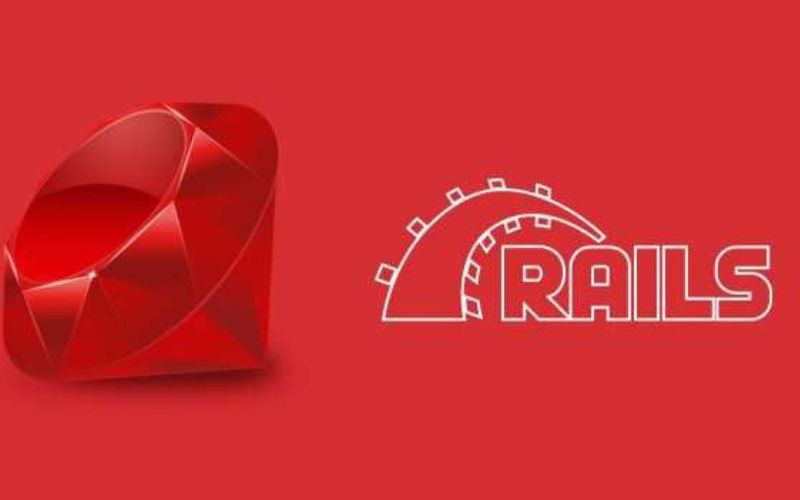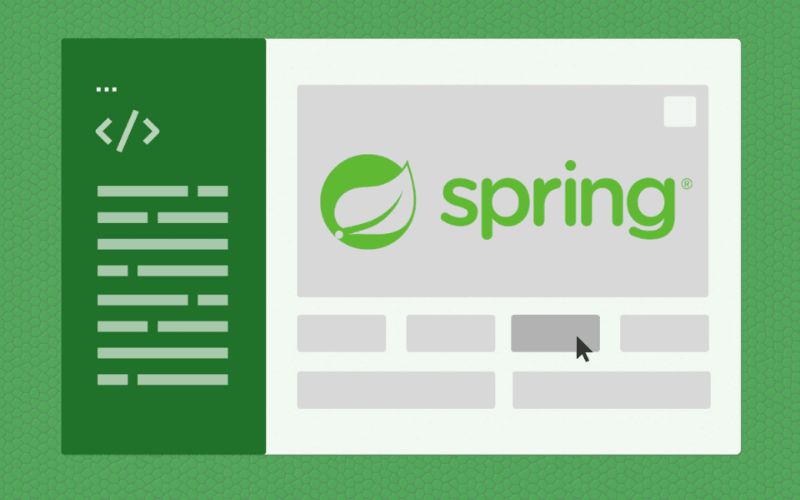Due to the
emergence of the internet as an ever-evolving medium, businesses are
increasingly relying on the web presence in order to establish an online
presence via the internet.
As a result
of utilizing the Internet to extend their reach, one retailer has abandoned
their traditional physical store visits, which previously were their mainstay.
The most
likely to attract new visitors are websites that are both user-friendly and
sophisticated.
We are
experiencing countless changes on the web as a result of such well-known names
as Netflix, Instagram, LinkedIn, Facebook, and YouTube.
In order to
build high-performance applications, these giant companies employ a common
factor: a reliable framework that enables them to run web applications of all
kinds and sizes.
As a
prerequisite for building robust interactive and robust applications, Web
frameworks are required both on the front end and the back end.
In this web
framework list, we are going to introduce you to some of the most popular web
frameworks in 2022. But first, let us see why we should use web development
frameworks in the first place.
Reasons we need web
development frameworks
Below are
the most important reasons you must consider a framework for web development:
- It makes code
more efficient and reusable: When developing a website, it is beneficial to use
a web framework to code quickly, efficiently, and effectively. A live reloading
and hot reloading feature are also available within the framework, which
reduces the development cycle and costs.
- Streamline and
eliminate errors: By using frameworks, the development process can be
streamlined, which reduces the possibility of errors and bugs. As a result of
the framework handling data binding and configuration, you can focus on
developing your application rather than worrying about the details of the
background.
- Bootstrap
Development: Developers are provided with a variety of tools and packages that
can accelerate the development cycle. Because frameworks prevent programmers
from having to write all scripts from scratch, programmers are able to save a
significant amount of time. Even if you do not have previous experience in web
development, frameworks can provide the opportunity to explore specific
features with the same passion as a skilled programmer.
- Reduce Code
Length: Frameworks make it possible to add standard functionality to an
existing website without having to write lengthy code lines. The benefits of
frameworks for developers include the automated and condensed coding process
and the automation of it. A development team can easily modify and bootstrap
the predefined codebase by making a few simple changes.
▶️ Read More: Pros and cons of .NET Framework
Best frameworks for web
development 2022
Here are the
best frameworks you can consider for backend and frontend web development.
React
Meta, the
company that formerly operated Facebook, introduced React in 2013, and it has
gained tremendous traction among web developers
It is
important to note that React uses both JavaScript and React to create user
interfaces that are appealing to developers or businesses that build front-end
applications using React.
If you want
to create dynamic content on your website or create a single-page application,
React is an excellent choice.
The
lightweight, flexible, and server-side rendering capabilities of React make it
a powerful framework for developing mobile applications, compared to other front-end
frameworks. React also offers excellent SEO support and server-side rendering
performance.
In addition
to Netflix, Instacart, Salesforce, Flipboard, Dropbox, Asana, and countless
others, React JS is used by a wide range of web applications.
Express
It has
become increasingly popular in recent years to use Nodejs Express to develop
web applications, which has rapidly become one of the best frameworks available
today.

Several
major companies, such as Accenture, IBM, and Uber, depend on the framework
since it offers a number of advantages over competing frameworks such as Kraken
Sails and Loopback.
Angular
Angular 2.0
is a rewritten version of Angular that makes it possible for developers to
create high-performance and large-scale JavaScript-based web applications. It
has gained popularity since its release Angular 2.0 and has caught the
attention of major technology companies.
Aside from
its robust features, Angular is compatible with cross-platform and client-side
frameworks, enabling it to run on both the web and mobile devices with ease.
As well as
integrating HTML, CSS, and TypeScript a superset of JavaScript, Angular
provides a wide range of other web development tools.
A number of
popular web applications use Angular JS in conjunction with TypeScript for
constructing enterprise-level applications, including PayPal, Forbes, UpWork,
Microsoft Xbox, Google Chrome, etc.
Django
The Django
framework combines a Model-View-Template with Python to develop web
applications. Uses of the framework include Google, YouTube, and Instagram.
In addition
to its battery-included feature, Django is also said to have features such as
authentication and messaging that are included as part of its battery-included
feature.
As a result
of Django's use of the convention-over-configuration pattern and the DRY
pattern, the security of the application is extremely important.
In this way,
developers have the option of designing secure websites using Django's tools or
integrating security features directly into the framework, such as preventing
code execution within the template layer.
Vue JS
There are
several other open-source JavaScript frameworks that can be used to create
stunning, interactive user interfaces in addition to Apache VueJS
Created by
Google in 2014, it was designed to be a viable alternative to React and Angular
for developing SPAs (Single Page Applications), high-performance progressive
web apps, and visually appealing user interfaces.
In this
framework, the best features of both AngularJS and ReactJS are combined by
utilizing ReactJS's Virtual DOM and View Layer for AngularJS.
Known for
its ease of use and versatility, Vue JS has become one of the most popular
frameworks for web development since it was launched in 2014.
Several
large organizations and web development companies have been attracted to the
library due to its flexible design structure and support for TypeScript.
A few of the
most popular web applications that use Vue JS include Gitlab, Netlify, 9GAG,
Behance, Chess, etc.
Rails
Rail is a
very popular framework that is constructed based on the Model-View-Controller
paradigm that is loved and used by many developers.
Aside from
Docker and GitHub, Airbnb, Hulu, and Shopify use Rails, a framework that is
regarded as beginner-friendly due to its open discussion of pros and cons,
making it easy for beginning web developers to get started quickly.

There are
many gems available for Rails, and they extend the application's functionality
and enable faster and more efficient development.
Furthermore,
the Rails community is friendly, with a variety of tutorials, screencasts, and
other resources available to assist you in becoming a Rails expert.
If you
intend to get the most out of Rails once you dig deep inside and uncover its
magic, you will encounter a steep learning curve and it is somewhat difficult
to deploy it in a production environment.
Ember JS
In order to
understand EmberJS in its entirety, it is imperative to comprehend HTML and CSS
as the primary building blocks.
With the
release of Ember 2.0 and the impressive stability that Ember provided, Ember
gained a reputation as a tool that could easily produce maintainable and
reusable JavaScript web applications.
Through the
elimination of time-consuming features and the incorporation of the best JS
practices at the core of Ember, the company aims to maximize developer
productivity.
Additionally,
it is capable of developing dynamic client-side applications as well as
single-page applications using a number of features and idioms that can be
enhanced by general best practices and idioms.
As well as
desktop and mobile applications, EmberJS can also be used for online services
such as LinkedIn, Apple, DigitalOcean, Intercom, and many others.
Laravel
There are a
number of Model-View-Controller frameworks available, but one of the most
popular is Laravel. Laravel is a Model-View-Controller framework that uses PHP,
one of the most widely used programming languages on the planet.
Furthermore,
Laravel is equipped with API support out of the box and offers an extensive
range of packages for extending its functionality.
There are
more than a thousand screencast tutorials available on Laracasts, one of the
most popular screencast tutorial websites on the Internet. It features videos
on PHP, Laravel, and frontend technologies in the Laravel ecosystem.
It is
therefore possible that Laravel would not be an ideal solution for large
projects because it does not perform as well as Django or Express.
JQuery
The JQuery
framework continues to be one of the most popular players in the market and is
highly regarded among developers due to its ease of use and simplicity of
programming.
Developed
primarily to assist developers in creating robust web applications, this
lightweight JavaScript library has gained worldwide recognition for its rich
features since its release into the public domain in 2006.
Using
JavaScript and its small and fast library, HTML elements and JavaScript code
can seamlessly interact in a web page
By providing
a means for web pages to interact with one another, JQuery simplifies the use
of AJAX and CSS animations.
Due to the
fact that JQuery adheres to a number of SEO-friendly practices, you should be
able to implement a number of SEO-friendly practices. It is also a simple and
efficient tool, so you will not have to write a lot of Javascript code.
JQuery is
used in many popular web applications, such as WordPress, GeeksforGeeks,
Bitbucket, Trello, and Codepen.
Spring
The Spring
framework is based on the Model-View-Controller concept and emphasizes Java,
one of the world's most popular programming languages.

Spring is a
framework used by many websites, including Wix TicketMaster, and BillGuard in
order to encrypt and decrypt their data. Spring is also supported by hundreds
of sister projects, which enhance its performance and enable it to be scaled
easily.
Because of
the strong typing of this framework, it is popular for building web applications,
but there might be a steep learning curve if you do not have any prior Java
expertise.
Backbone
Backbone is
one of the most lightweight and well-suited frameworks for the construction of
rich single-page applications among all the front-end frameworks
Because it
has only one core dependency, it implements a portion of the MVC pattern and
has a vibrant ecosystem for creating client-side applications by combining
Mustache and Marionette.
▶️ Related: Most Used Swift Framework and Libraries
Conclusion
As you
noticed in this post, there are many various frameworks available out there for
you to make use of.
If you run
an online business and you need an expert web development team to leave your
work to, we recommend you consider our team.
Our web
development specialists are experts in web, desktop, android, and iOS app
development. So just take a minute and visit our website, see if there is
anything we can help you with.